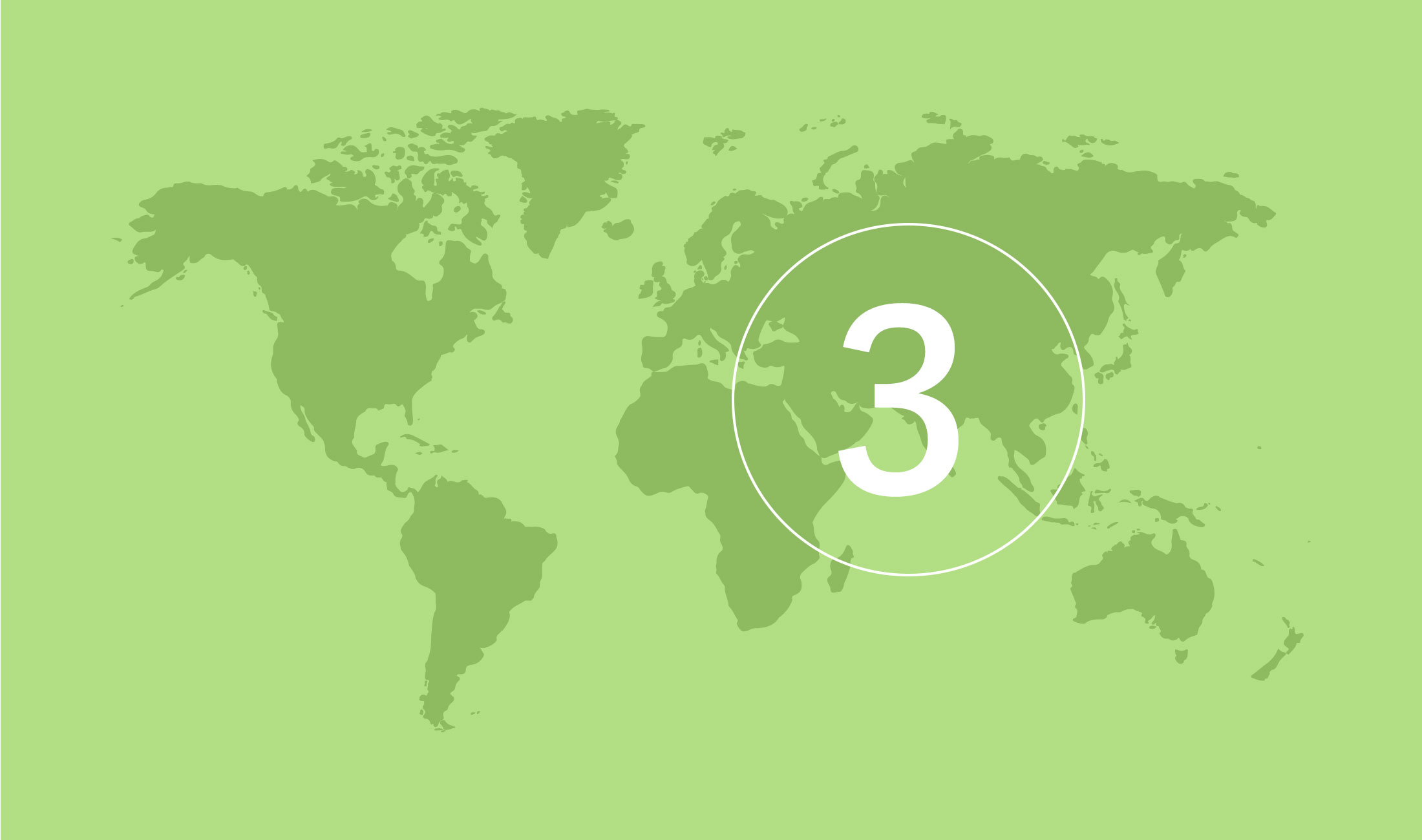
Romania
Category
3 of 7
| Risk type | Short | Long |
|---|---|---|
| Sovereign | ||
| Public | ||
| Bank | ||
| Corporate |
The icons indicate EKN's risk assessment.
A lower country risk category means a lower country risk. The icons mark EKN's ability to cover risks to different buyers in the country.
-
No policy established
- EKN has not analysed this country recently and therefore has no current opinion. If an exporter submits an application for such a country, EKN performs an analysis of the country at short notice and determines a policy.
-
Normal risk assessment
- EKN decides on guarantee issue based on an assessment of risk in the transaction. There are no predefined restrictions in the risk assessment or assumptions for risk assessment.
-
Restrictive risk assessment
- EKN sets stricter requirements in the risk assessment in order to guarantee a transaction. EKN may have specified special criteria that are key to the risk assessment of the guarantee holder category in question. This may mean that EKN sets a requirement that the counter party must have its own hard currency earnings or that external support can be expected, or that EKN sets a requirement for a letter of credit, government or bank guarantee. If the formulation of the transaction deviates from a defined restriction, we normally set more stringent conditions and may in the worst case refuse to guarantee the transaction. More stringent conditions may be that we reduce the sum guaranteed, raise the premium or require some form of security.
-
Normally off cover
- Here EKN does not normally cover currency transfer risks. However in some circumstances EKN may be able to go further with high risk countries than the restrictions of the country policy indicate. The application is then tested under the so-called GSL facility, which refers to guarantee issue with special country evaluation. There are specific requirements for this, primarily that the exporter has experience of the market in question. The risk is then shared with the exporter and by means of a mark-up on the premium.
-
OECD or EU countries
- Because of EU rules, EKN cannot issue guarantees for transactions with a risk period of less than two years for exports to Australia, EU countries, Iceland, Japan, Canada, Norway, New Zealand, Switzerland or the USA. If you have any questions, please telephone us on +46 8-788 00 00.
Country risk analysis
Country Risk Analysis of Romania
The latest Country Risk Analysis of Romania was issued in February 2025
Background
Romania has a diversified economy, with trade, tourism and manufacturing each accounting for just over twenty per cent of total output. Compared with other EU countries, Romania has a large agricultural sector and a significant information technology sector.
Foreign trade is an important component of the economy, but in comparison to smaller countries in the region, Romania is less sensitive to disruptions due to its size and economic diversity. The largest export sectors are machinery and transport equipment, accounting for 45 per cent of total exports, and metals and mineral products, accounting for just over 15 per cent.
The largest export market is the EU, accounting for just over 70 per cent. This is followed by the United Kingdom with nine per cent, and the United States with seven per cent.
Romania’s EU membership provides policy support and serves as an important safeguard, reducing transfer risk. The country has not yet met the criteria for euro adoption, but the introduction of the euro is likely only a few years away.
Political turbulence
After two years of annual GDP growth of two per cent, growth is expected to rise to nearly 3.5 per cent in 2025. The IMF’s forecast for 2026 indicates a further modest increase. In light of the political turbulence in the latter part of 2024, there is a risk that these forecasts will be revised downward if necessary budgetary tightening is not implemented and borrowing costs rise.
Romania’s public debt is relatively low but shows an upward trend. Public debt to GDP is expected to rise from around 50 per cent in 2022 to just over 60 per cent in 2026. This is partly due to structural weaknesses, including unfunded expenditures that create deficits in both the budget and the current account, in turn driving increased borrowing.
Romania borders both Ukraine and Moldova, which represents a risk factor in the context of Russia’s aggression against Ukraine and threats toward Moldova. Romania’s NATO membership minimises the risk of a direct Russian attack, but the risk of cyber and hybrid attacks has increased.
A Russian disinformation campaign was cited as the reason why the country’s constitutional court annulled the presidential election in December 2024, just days before the second round was to be held. The election will be re-run in full during spring 2025.
Parliamentary elections were also held at the end of 2024, in which the ruling coalition parties lost ground to far-right parties, but nevertheless managed to form a new EU-friendly coalition government with a sufficient majority.
In terms of physical climate risks and natural disasters, Romania faces a slightly lower risk of water scarcity than the average for OECD high-income countries and Europe. However, the risk of storms and rising sea levels is higher than in the comparison group.
Business environment
Romania’s banking system is well capitalised, and the proportion of non-performing loans is relatively low. The banks are largely funded through deposits, which contributes to stability. However, about one third of deposits are in foreign currency, which constitutes a vulnerability. The country’s three largest banks account for around 40 per cent of the banking system’s assets.
The business environment benefits from EU membership and, from January 2025, Romania and Bulgaria will be full members of the EU’s border-free Schengen area.
The judiciary is formally independent, but judges and prosecutors are at times subject to pressure from politicians and business interests, and corruption is a widespread problem in the country.
EKN’s business assessment takes into account the risk of negative impact on human rights. EKN focuses on the impact that the activity in which the exported goods are to be used may have. In this context, issues such as working conditions, child and forced labour, excessive use of force by security forces, indigenous peoples’ rights and land rights are of significant importance.
In Romania, the risk of human rights violations relevant to business operations is generally higher than the average for Europe and OECD high-income countries.
EKN’s policy
EKN classifies Romania in country risk category 3. According to EU competition rules, EKN and other export credit agencies may not cover payment risks (with the exception of letter of credit guarantees) for transactions with a total risk period (credit period + manufacturing period) of less than two years.
In all other respects, normal risk assessment applies, meaning that transactions are evaluated on their own merits without special conditions or requirements.
EKN’s commitment and experience
EKN’s guarantee issuance to Romania has consisted of a small number of transactions per year. In 2023 and 2024, the guarantee exposure increased significantly, from a few million SEK in 2022 to nearly SEK 2 billion in 2024. The increase in guarantees is due to a small number of transactions with private buyers, primarily in the telecommunications sector.
EKN has experience only with private buyers. Over the past five years, EKN has guaranteed an average of three transactions per year. Sporadic delays occur, but most payments are made within one to two months. Since 2020, indemnity payments have been made in three cases, totalling SEK 2 million. The same amount has since been recovered.
More for companies that want to export to Romania

EKN's guarantees
EKN's guarantees reduce the risk of payment defaults and help banks support businesses. Which guarantee suits your needs?
EKN's guarantees
Guarantee guide
Are you unsure which guarantee is the best fit for your specific transaction? Try our guarantee guide.
Guarantee guide